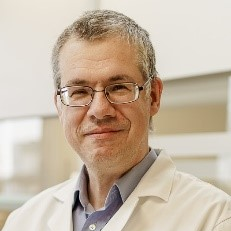Sustainable Shipping: Alternative Fuels and Technologies for Marine Applications
A special issue of Journal of Marine Science and Engineering (ISSN 2077-1312). This special issue belongs to the section "Marine Environmental Science".
Deadline for manuscript submissions: closed (5 November 2024) | Viewed by 10469
Special Issue Editors
Interests: alternative marine fuels; LNG; blue biotechnology; oil spill clean-up; cellulose aerogel
Special Issues, Collections and Topics in MDPI journals
Interests: alternative marine fuels; oil spill clean-up; cellulose aerogels; pyrolysis; hydrodynamic cavitation; electrochemistry; smart materials
Special Issues, Collections and Topics in MDPI journals
Interests: sustainable shipping; maritime transport and logistics; alternative marine fuels; transport systems and storage technologies
Special Issue Information
Dear Colleagues,
Maritime transport is extremely important for world trade, as more than 90% of world trade is carried out by sea. Consequently, fuel consumption and emissions from maritime transport continue to increase, which undoubtedly also contributes to climate change. Therefore, the shipping industry is under increasing pressure to act upon the Paris Agreement and reduce green-house gas (GHG) emissions. The ambitious new IMO strategy to reduce GHGs from ships will shape the future path towards decarbonization of the fleet and will bring further ecological challenges. The substantial emission reductions which must be achieved over the next decades are expected to drive technology development and, in particular, the introduction of alternative fuels.
There are many options for alternative fuels such as biodiesel, hydrogen, ammonia, methane and methanol. Challenges include the transition to new and alternative fuels and non-conventional technologies, as not all ships are likely to switch to the same fuel. In addition, increasing attention must be paid to the consequences of dangerous NOx, SOx and particulate emissions.
Substantial investment is being put into researching safe and economically feasible alternative carbon-neutral fuels and into developing fuel technologies. This can highly contribute to reducing greenhouse gas emissions and it is important to continue research in this area. We therefore invite you to submit articles based on laboratory and field experiments, including, but not limited to, the following topics:
- LNG;
- LPG;
- (Bio)methanol;
- Biofuels;
- Hydrogen;
- Ammonia;
- E-fuels;
- Technologies and solutions helping minimize the negative impact of shipping: carbon capture and storage technologies, scrubbers, treatment technologies, etc.
Prof. Dr. Tatjana Paulauskiene
Dr. Jochen Uebe
Prof. Dr. Ludmila Filina-Dawidowicz
Guest Editors
Manuscript Submission Information
Manuscripts should be submitted online at www.mdpi.com by registering and logging in to this website. Once you are registered, click here to go to the submission form. Manuscripts can be submitted until the deadline. All submissions that pass pre-check are peer-reviewed. Accepted papers will be published continuously in the journal (as soon as accepted) and will be listed together on the special issue website. Research articles, review articles as well as short communications are invited. For planned papers, a title and short abstract (about 100 words) can be sent to the Editorial Office for announcement on this website.
Submitted manuscripts should not have been published previously, nor be under consideration for publication elsewhere (except conference proceedings papers). All manuscripts are thoroughly refereed through a single-blind peer-review process. A guide for authors and other relevant information for submission of manuscripts is available on the Instructions for Authors page. Journal of Marine Science and Engineering is an international peer-reviewed open access monthly journal published by MDPI.
Please visit the Instructions for Authors page before submitting a manuscript. The Article Processing Charge (APC) for publication in this open access journal is 2600 CHF (Swiss Francs). Submitted papers should be well formatted and use good English. Authors may use MDPI's English editing service prior to publication or during author revisions.
Keywords
- alternative fuels
- LNG
- LPG
- (bio)methanol
- biofuels
- hydrogen
- ammonia
- e-fuels
- non-conventional technologies
- sustainable shipping
- maritime transport technology
Benefits of Publishing in a Special Issue
- Ease of navigation: Grouping papers by topic helps scholars navigate broad scope journals more efficiently.
- Greater discoverability: Special Issues support the reach and impact of scientific research. Articles in Special Issues are more discoverable and cited more frequently.
- Expansion of research network: Special Issues facilitate connections among authors, fostering scientific collaborations.
- External promotion: Articles in Special Issues are often promoted through the journal's social media, increasing their visibility.
- Reprint: MDPI Books provides the opportunity to republish successful Special Issues in book format, both online and in print.
Further information on MDPI's Special Issue policies can be found here.







